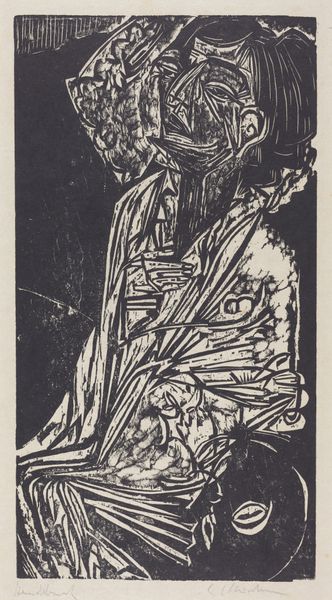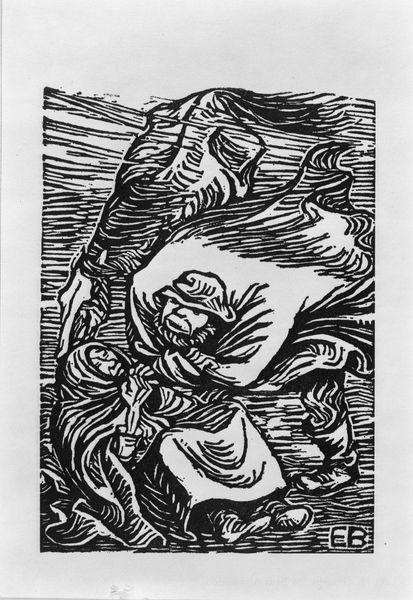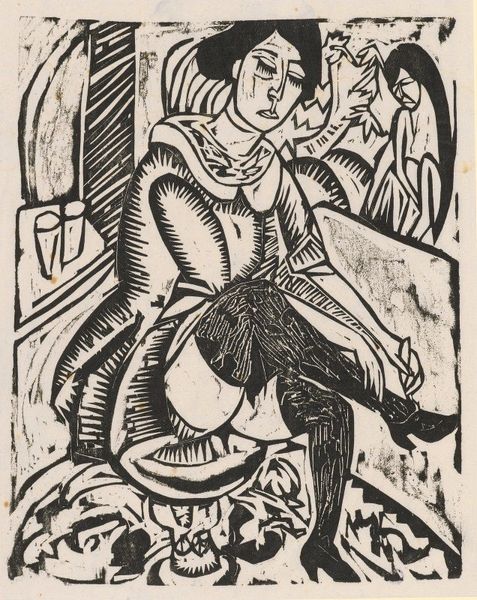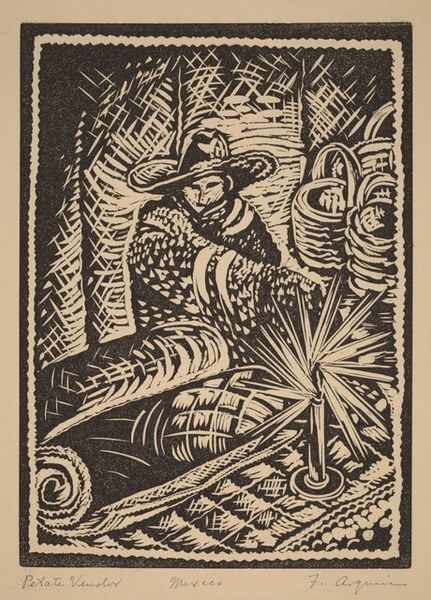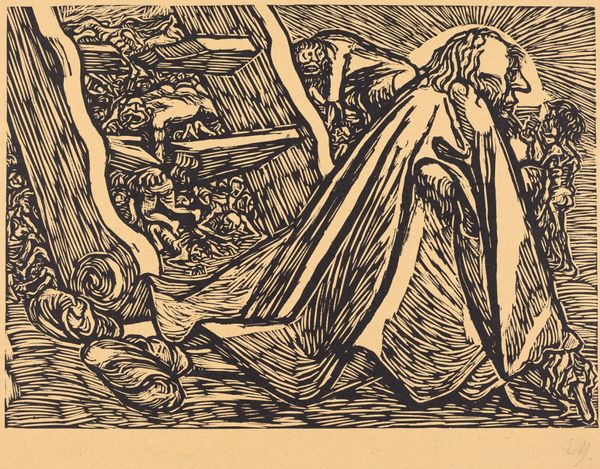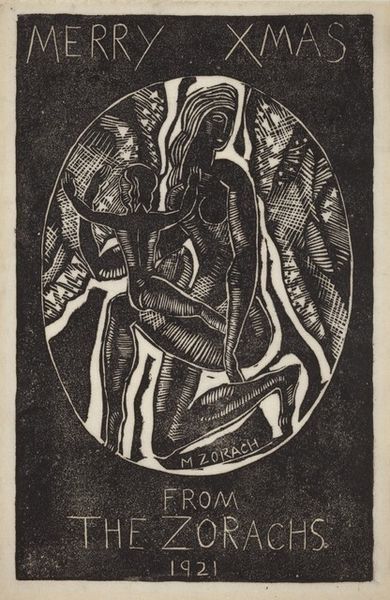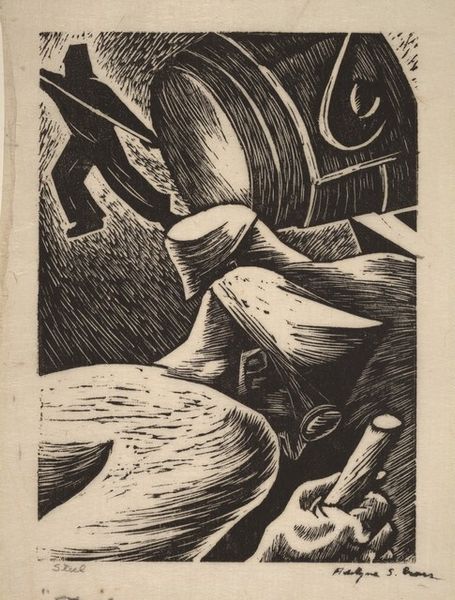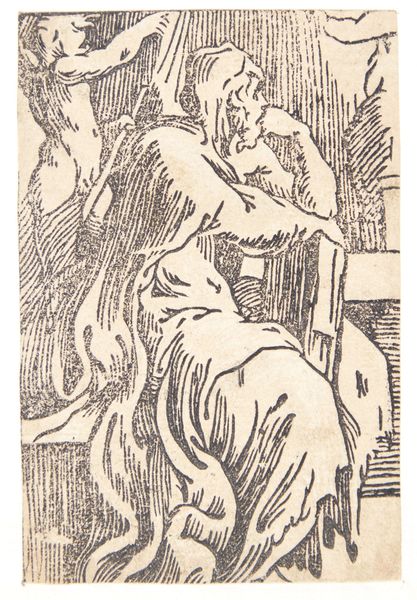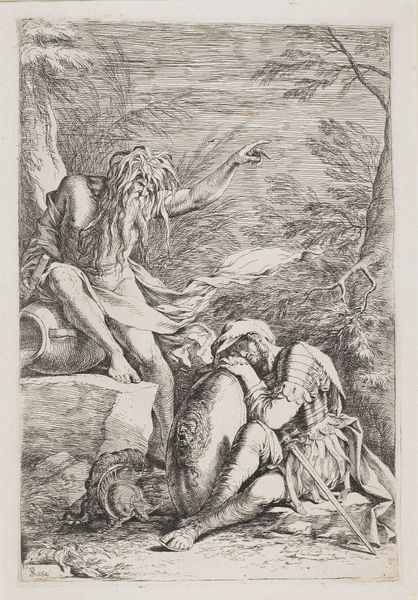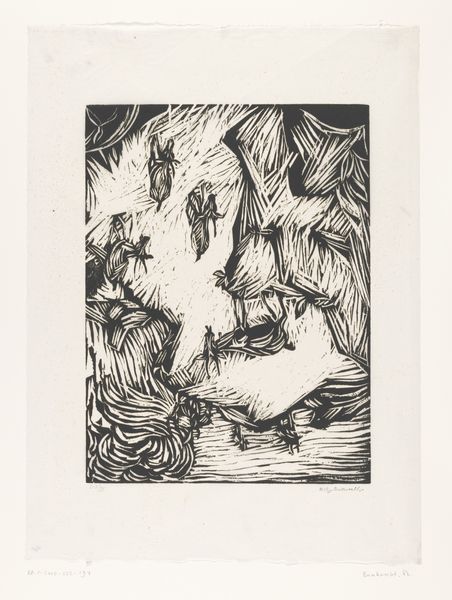
print, woodcut
#
medieval
#
narrative-art
# print
#
landscape
#
german-expressionism
#
figuration
#
expressionism
#
woodcut
Copyright: National Gallery of Art: CC0 1.0
Editor: Here we have Ernst Barlach's woodcut, *Gruppe im Sturm (Couple in a Storm)*, likely from 1920. It's such a striking image. The thick, swirling lines really convey a sense of chaos and vulnerability. What do you see in this piece? Curator: Beyond the immediate emotional impact of the storm, I see a potent commentary on the precariousness of human existence, especially within the tumultuous societal landscape of post-World War I Germany. Barlach, aligned with German Expressionism, often used figures to explore inner turmoil and the struggle against external forces. Notice how the woodcut medium itself—stark contrasts, rough hewn lines—contributes to this sense of anxiety and raw emotion. What kind of story do you think he wanted to convey with these figures? Editor: It feels like they're trying to shield themselves, not just from the elements, but from something more…intangible? Almost like a shared trauma. Curator: Exactly. And consider the title: *Couple in a Storm*. This isn’t just about individuals facing a natural disaster; it suggests a shared burden, a partnership enduring hardship. This resonates with broader themes of collective trauma and resilience in the face of social and political upheaval. What do the characters' gender presentations suggest to you? Editor: I suppose the more draped figure might be coded as feminine, needing the other’s protection. Curator: Yes, although these roles may shift and overlap. Thinking intersectionally, we can see not just gender but also class and possibly even allusions to religious narratives—sheltering from an outside force in the storm. Barlach himself created religious art. Editor: So, it's more than just a dramatic scene; it's a reflection of the social and political anxieties of the time? Curator: Precisely. Barlach used this visual language of anguish and resilience to capture something profound about the human condition. It asks us to consider how external forces shape our inner lives and how we find strength in connection, and potentially calls for us to restructure power in moments of disaster. Editor: That gives me a lot to think about; seeing it in context really shifts how I understand the work. Curator: It makes you think about the art beyond just being something pretty on a wall. It also tells stories of its place, time, and the people within.
Comments
No comments
Be the first to comment and join the conversation on the ultimate creative platform.
